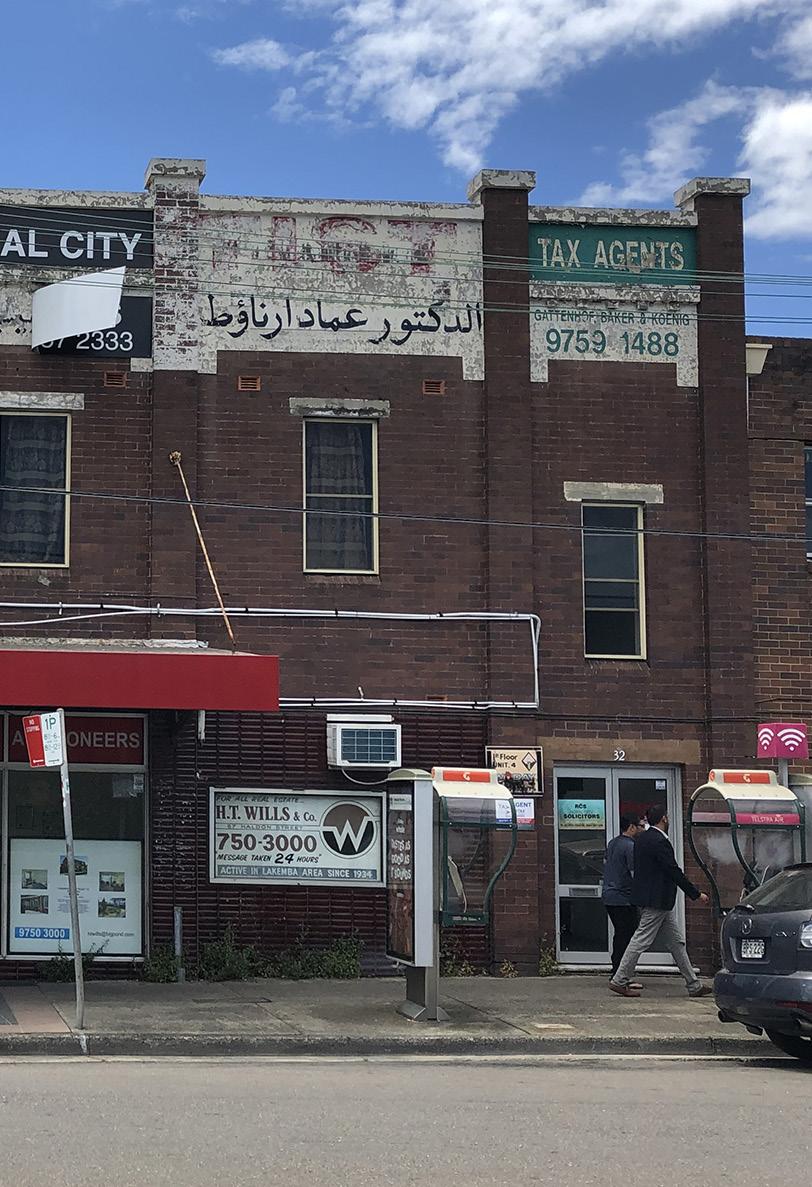
3 minute read
Street Life Studies
Context
Course overview
Advertisement
The course runs for one week in Sydney and two weeks in Phnom Penh, in January each year. Students work in interdisciplinary and intercultural groups to engage with the spaces, people and systems of the street.
New Colombo Plan Logo
In a moment of time when the balance between the public and the private is arguably shifting in favour of the latter, it is important that a close eye is kept on the status of public space in our cities. Vital and inclusive public space tends to emerge as a product of numerous competing forces. Attitudes, planning guidelines and levels of enforcement can strangle or let flourish the behaviours which can enliven these places so key to cities. The course is an opportunity to better understand the potentials and limitations of these diverse conditions.
The New Colombo Plan logo is a registered trademark and is legally protected.
Street Life Studies puts forward the premise that the vitality of public spaces hinges on their ability to facilitate a diversity of often unexpected usages, movements and interactions, by a broad spectrum of people, over varying time periods. It suggests that streets, as the public veins of the city, are where this activity can and should occur.
The logo is the primary, most easily recognisable image of the New Colombo Plan. The logo is comprised of:
• The New Colombo Plan logo
• New Colombo Plan written in full
New Colombo Plan Logo
Within this framework, the course suggests designers take an active role in engaging first hand with the complex layers of place throughout the design process. This intrinsically means an engagement not only with space but with the people who use it.
• The New Colombo Plan tag line: Connect to Australia’s future - study in the region.
White logo on the gradient background (prefered option)
Phase One: STREET LIFE OBSERVATION consists of students working in groups to undertake on-field analysis of urban streets in selected areas of Sydney and Phnom Penh. Using hand drawing and simple data collection techniques, students are guided through a series of observational exercises. They identify, document, and analyse the spaces, systems, users and usages of each street environment. The drivers behind spacio-behavioural patterns are interpreted as a way to begin to understand the needs of those who use the streets.
The logo is the primary, most easily recognisable image of the New Colombo Plan. The logo is comprised of:
• The New Colombo Plan logo
• New Colombo Plan written in full
The logo should be included on all external New Colombo Plan correspondence and documents, both printed and electronic.
• The New Colombo Plan tag line: Connect to Australia’s future - study in the region.
The course analyses two very different street environments; Lakemba in Sydney and Khan Daun Penh in Phnom Penh. These places hold in common both imminent change and clear expression of street life. Not without their challenges, Phnom Penh streets see diverse urban dwellers playing out much of their lives in the public domain. Street space is appropriated by its users in a ‘bottom-up’ manner to meet varying needs, rather than predominantly emerging as a result of those involved in the broader level design and legislation of the built environment. In Sydney, this kind of mixed informal activity is much less apparent. The physical street space itself is not dissimilar but usage tends to center upon vehicular and pedestrian circulation, and regulation of activity is significantly more controlled. The opportunities and constraints of each place can be understood through direct observation and comparison.
The New Colombo Plan logo is available in two variations:
• White and light blue for the use on the gradient and dark coloured backgrounds on the gradient background (prefered option)
White logo on the gradient background with the Australian Government Crest
White logo on the gradient background with the Australian Government Crest
Phase Two: STREET LIFE INTERVENTION asks students to use their street observations as design ‘evidence’, to identify an urban challenge and inform an urban brief and intervention. Propositions act as urban acupuncture, scalable, and with the overall aim of fostering vital, people-centred public street space. The course encourages students to challenge their understanding of design intervention as purely physical and ‘provided’ by the designer or legislator. They are asked to imagine design systems and strategies developed with and by end users. Students consider how transcultural precedents might inform approaches across cities.
The logo should be included on all external New Colombo Plan correspondence and documents, both printed and electronic.
The New Colombo Plan logo is available in two variations:
• Reversed version of light blue for the use on light coloured backgrounds.
Partnerships
• White and light blue for the use on the gradient and dark coloured backgrounds
• Reversed version of light blue for the use on light coloured backgrounds
Light blue logo
The program has been built, and relies upon, ongoing relationships developed from 2010 between University of New South Wales Sydney (Built Environment), The Royal University of Fine Arts (Faculty of Architecture and Urbanism), Sa Sa
Light blue logo with the Australian Government Crest
Light blue logo with the Australian Government Crest
Art Projects, The Vann Molyvann Project, New Khmer - Architecture, and the people of Kahn Daun Penh and Lakemba. The program is funded through the Australian Government New Colombo Plan.











